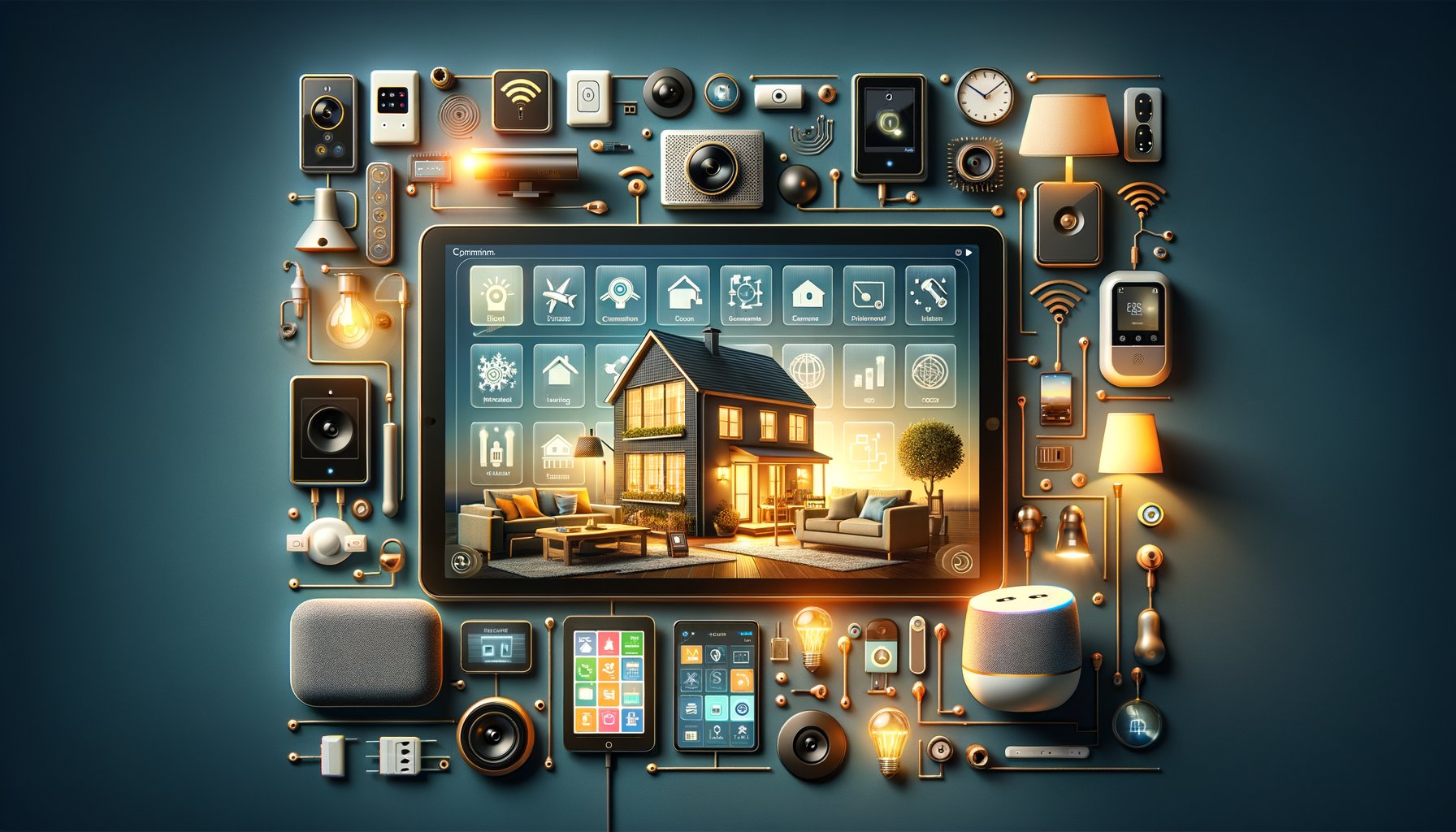Physical Address
304 North Cardinal St.
Dorchester Center, MA 02124
Physical Address
304 North Cardinal St.
Dorchester Center, MA 02124

Imagine a home where your devices communicate with each other, understand your preferences, and can be controlled from anywhere in the world. A place where your refrigerator notifies you when you’re running low on milk, or your thermostat adjusts itself based on the weather forecast. Welcome to the realm of smart home technologies — an exciting frontier in today’s digital age.
Smart home technology, also known as home automation or domotics, is a term used to describe devices, appliances, or systems that connect into a common network. This network can be independently and remotely controlled. The advent of smart home technology has revolutionised our interaction with our living spaces by offering superior comfort, security and energy efficiency.
Understanding smart homes begins with familiarising yourself with its core components:
The most visible parts of any smart home are the devices themselves. These could range from smart light bulbs and thermostats to security cameras and refrigerators. Today’s market is flooded with a plethora of these intelligent gadgets designed to make life easier.
All these devices need a way to communicate with each other and the user. This is achieved through connectivity options like Wi-Fi, Bluetooth or even proprietary wireless technologies.
This refers to how users interact with their smart devices. It could be through dedicated apps on smartphones or tablets, voice commands via virtual assistants like Alexa or Google Assistant, or even through AI-powered chatbots.
In essence, a smart home operates via interconnected devices that communicate with each other through a network, typically the home’s Wi-Fi. This allows them to send and receive information about their status and any changes in their environment.
Take, for instance, a smart thermostat. It can monitor your home’s temperature and adjust it based on pre-set preferences. If you usually come home at 6 PM, the thermostat can start heating or cooling your house an hour before so that it’s at the perfect temperature when you arrive.
While the convenience factor is undeniable, there are several other benefits to embracing smart home technology:
Smart devices like thermostats or light bulbs can adapt to your behaviour patterns to optimise energy usage. This not only reduces your carbon footprint but also saves on energy costs.
With devices such as security cameras, smart locks and alarm systems, homeowners can monitor and control their property’s security from anywhere in the world.
The ability to customise every aspect of your living environment — from lighting and temperature to music — ensures a level of comfort that was unimaginable just a few decades ago.
If you’re considering dipping your toes into this exciting tech trend, here are some steps you could follow:
In the end, smart homes are all about personalisation and convenience. They offer an innovative way to interact with our living spaces, making them more responsive, efficient and secure. As we continue to embrace this digital revolution, our homes will become increasingly intelligent — forever changing the way we live.